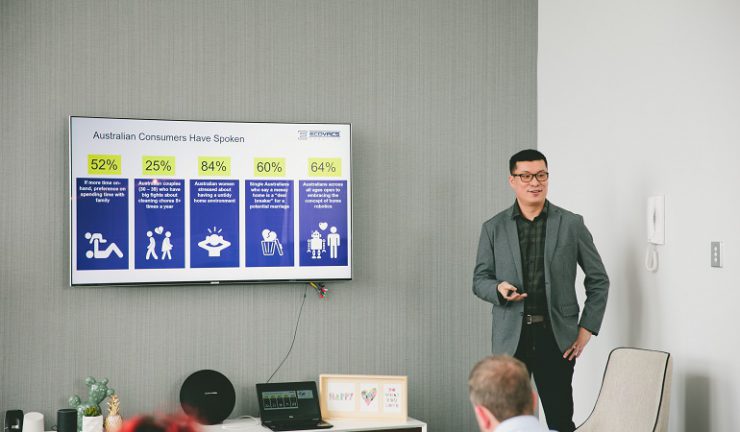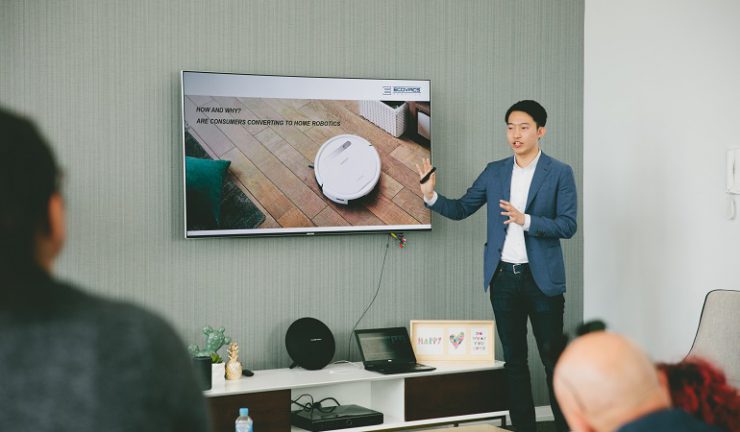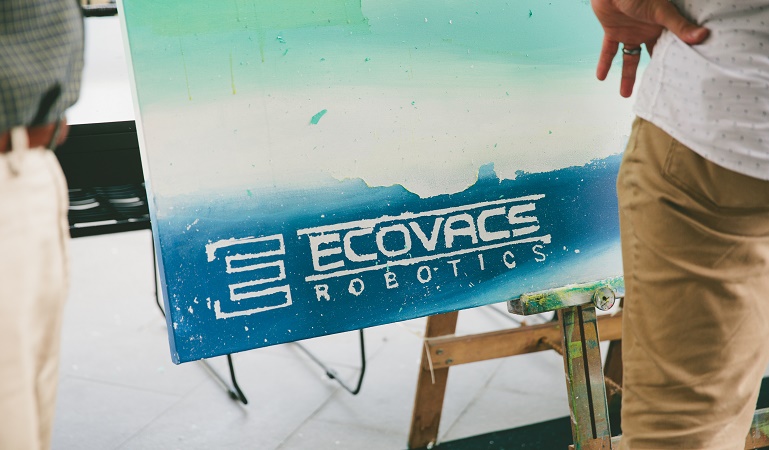Among industry insights.
The majority (64%) of Australians are happy to openly embrace robotics that assist with house chores, a figure that increases to 74% among 30-39 year olds, according to market research from Ecovacs in partnership with Pure Profile.
Meanwhile, 58% of people said they don’t need to understand how the technology works, so long as it does the job and saves them time. It comes as no surprise that Australians hate cleaning their homes, but 79% are still stressed if they come home to a dirty home or live with someone who doesn’t do their fair share.
These market insights were revealed at an exclusive media event, where Ecovacs announced the addition of three new models to its robotic range.
Ecovacs vice president, Jonathan Tang (pictured) noted that the company has launched products in over 40 markets around the world including the US, Canada, Germany, France, Italy, Japan and Korea. “So why are we here in Australia? We have found that Australian consumers are one of the earliest adopters of new technology and continue to adopt it to enhance their lifestyle and make their lives easier,” he said.

Within the floorcare market, Ecovacs expects robotic vacuum cleaners to account for 10 million units in 2018, compared to 8 million units in 2017.
“There are many brands in the robotic space but in terms of scale, we want to continue to drive this growth to propel the adoption of robotics and autonomous cleaning. We currently hold around 12% market share in the US with 20% share on Amazon. Germany is another key market for us, and is the third largest market in the world for robotic vacuum cleaners. In just 14 months, we have grown to hold around 40% market share in Germany.
“China is the largest market for robotic vacuum cleaners and out of the 10 million units expected to be sold worldwide this year, 5 million units will be sold in China. We hold 50% share in the Chinese market and we are the number one brand in small home appliances.
Ecovacs is eager to bring new technologies and innovations at an attractive price point to Australian consumers, according to Tang. Since launch around five months ago, Ecovacs is now working with three retail partners – Harvey Norman, Bing Lee, Betta Home Living – as well as TVSN.
Ecovacs president, David Qian (pictured) said the company has sold 2.7 million Deebot units over the last year and one robotic saves users around 170 hours every year, based on a clean frequency of two times per week.

“Research has shown that robotic vacuum cleaners is the second fastest growing small domestic appliance market in Europe, slightly behind handstick vacuum cleaners, and it is the fastest growing market in North America, ahead of both canisters and handsticks,” he noted.
But according to Qian, it’s not about making a choice between a robotic, canister or handstick vacuum cleaner. “It’s about making the choice whether you want to do the cleaning yourself or you want the device to do it for you so you can enjoy doing more of what you love. Robotics is not only a technology trend but also a lifestyle trend,” he said.
So why are consumers converting to robotic vacuum cleaners? “The release of the first Apple iPhone in 2007, really kick started the ‘smart’ era – the smartphone, smart appliances, smart everything. We continue to make progress down this path. The robotic vacuum cleaner is at the apex of software and hardware and it will definitely be the future.”

